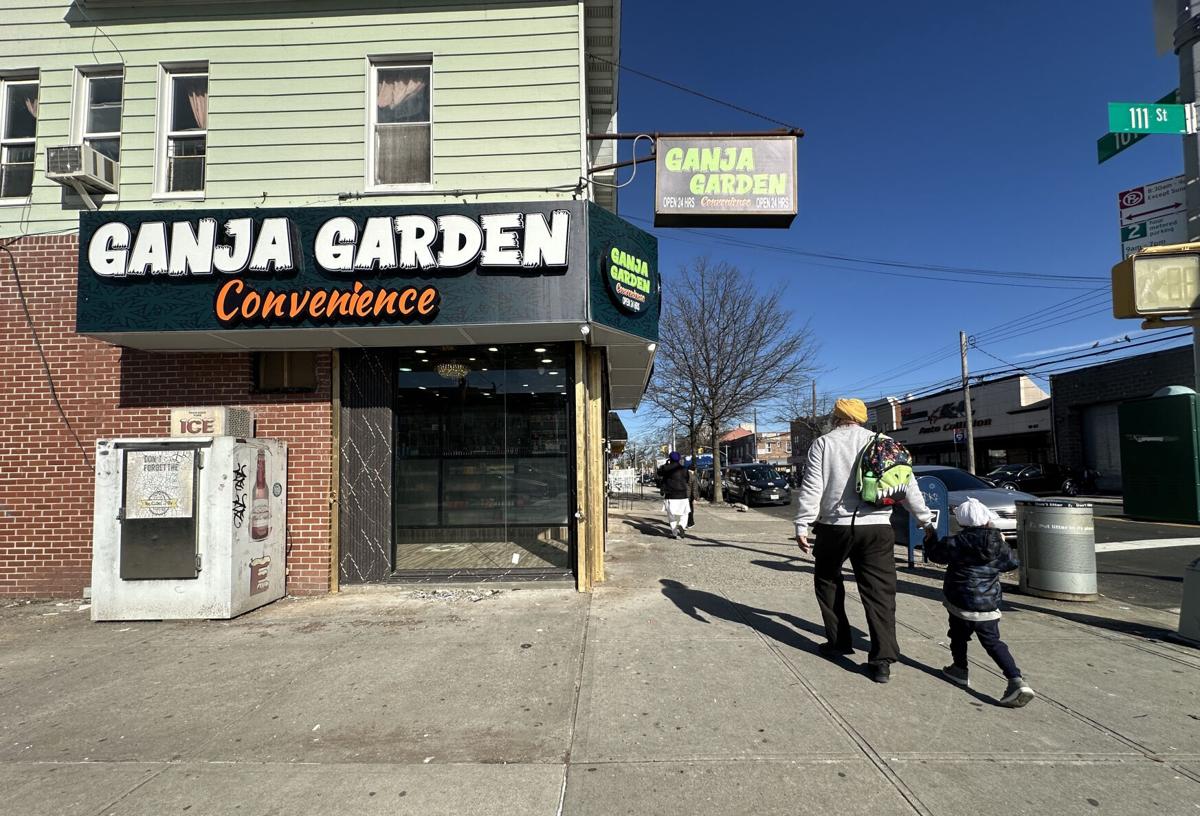Elements of SMOKEOUT Act pass in state budget
- by Kristen Guglielmo, Associate Editor, April 18, 2024
- From the Queens Chronicle
Assemblywoman Jenifer Rajkumar, who has advocated for the bill at rallies around the city, announced in a press release that her SMOKEOUT Act was included in the state budget. PHOTO COURTESY NYS ASSEMBLY
The SMOKEOUT Act enables local municipalities to close illegal smoke shops if the location is an “egregious actor,” such as operating next to a school or selling unregulated cannabis. PHOTO BY KRISTEN GUGLIELMO
New York City and all local municipalities will now have the power to shut down illegal pot shops, according to Gov. Hochul.
Assemblywoman Jenifer Rajkumar (D-Woodhaven) penned the Stop Marijuana Over-proliferation and Keep Empty Operators of Unlicensed Transactions Act, colloquially known as the SMOKEOUT Act, to combat the illicit shops, and provisions from this bill are to be included in the state budget, according to a press release from her office. In the other house of legislature, the bill was carried by state Sen. Leroy Comrie (D-St. Albans).
“Unlicensed dispensaries have littered New York neighborhoods, blatantly circumventing our laws and selling potentially dangerous products,” Hochul said Friday in a statement. “Enough is enough. I promised to protect our communities and hard-working, legal cannabis licensees by expediting the closure of illicit storefronts. I’m proud to stand up and say we got it done.”
The New York City Administrative Code will be amended, allowing the City to act under the law immediately. Hochul is also launching a statewide task force to carry out civil enforcement to close illegal stores.
“I am proud to say that New York City and all localities will now have the power to shut down illegal cannabis shops on their own, without waiting for the State Office of Cannabis Management,” Rajkumar explained. “In New York City, the Office of the Sheriff will now be able to deputize the NYPD and all agencies to help padlock the shops. This means New York City can use its full manpower to get the job done.”
Provisions include that localities can padlock a spot immediately, provided that the shop is an “egregious actor,” which is defined as selling cannabis to children, operating next to a school or place of worship, selling unregulated cannabis or products that lead to illness or hospitalization or the presence of illegal firearms.
Unlicensed shops that do not fall into one of the above categories can be closed upon a second inspection, and any previous inspection conducted before the passage of this law counts for the purposes of padlocking.
Violating a padlock order will be a Class A misdemeanor, and if landlords fail to bring forth eviction proceedings against tenants in violation of the cannabis law, they will be subject to strict penalties, including a $50,000 fine for any landlord notified of the violation within NYC, and five times the rent from the time the landlord was notified of the violation outside of NYC.
There are also due process provisions that give violators a chance to “cure and be heard,” according to Rajkumar’s press release.
Violators can file an appeal within seven days and are entitled to a hearing on the appeal within three days of filing. A decision on the appeal must be rendered four days after the hearing, and failure to appeal leads to a default judgement against the egregious actor.
“We’ll notify bodega owners if they continue to sell illegal products, we’ll take away their liquor, tobacco and lottery licenses,” Hochul said Friday.
Rajkumar said that during the next few weeks, she will be raiding illegal shops alongside city Sheriff Anthony Miranda.
Mayor Adams has been an outspoken supporter of the legislation, and has said that if the bill passed, he would be able to shut down all of the city’s illegal smoke shops within 30 days.
Asked for comment, a City Hall spokesperson said, “We carried our bold agenda to Albany for several requests, and thanks to our efforts, this budget will achieve our core priorities, including the power to finally close down the illegal smoke shops plaguing our streets. Thanks to our work with Governor Hochul and other state partners, this budget will allow our city agencies to use the full force of the law to enforce against, regularly inspect, and permanently close illegal dispensaries more quickly and efficiently.
“We celebrate the important steps forward we have made toward uplifting the legal cannabis market and ensuring New Yorkers are safe from illegal cannabis products and shops.”










